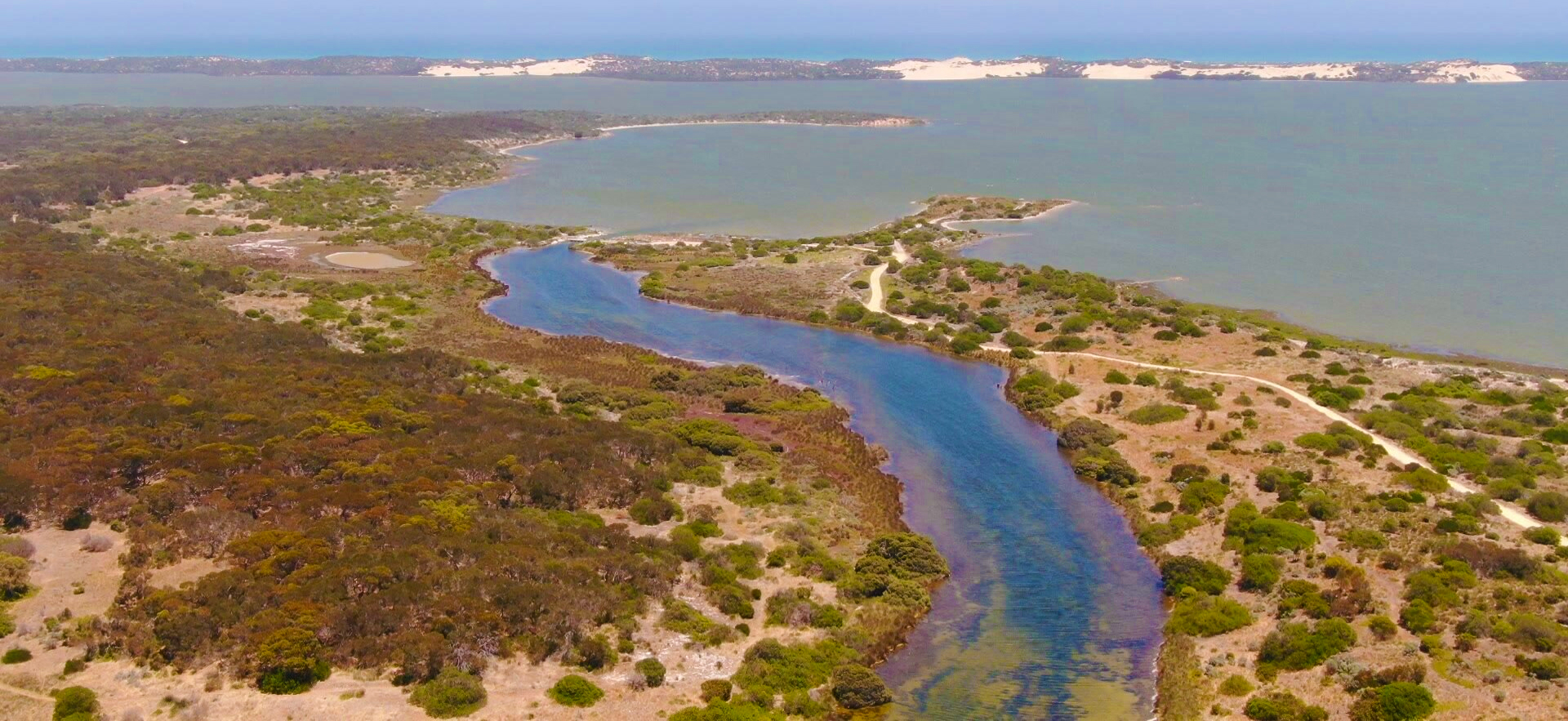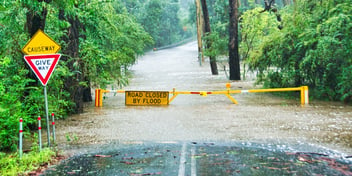Research collaboration assesses impact of 2022-23 floods on the Coorong

The 2022-23 floods in the Murray-Darling Basin were South Australia’s largest flood event since 1956, and a group of researchers is studying the effects of the high freshwater flows on the Coorong to help inform water management moving forward.
Researchers from the University of Adelaide, Flinders University and the South Australian Research and Development Institute (SARDI) are working together to provide valuable insights into the health and functioning of the Coorong ecosystem following the high flows.
The project is part of the Department for Environment and Water’s Healthy Coorong, Healthy Basin Program, which is jointly funded by the Australian and South Australian governments. The outcomes of the research will help inform water management options, conservation strategies and decision making.
University of Adelaide Professor Luke Mosley said the Coorong is a particularly unique system in terms of its geomorphology – a 140-kilometer long waterway separated from the ocean by a sand dune, with varying salinity levels within the northern and southern lagoons.
“The Coorong is the only estuary on the River Murray, which is Australia’s largest river system. It’s a Ramsar-listed river system, which means it's both nationally and internationally important,” he said.
“The specialness of the ecosystems includes the types of plants and animals that rely on it, and often they are rare or unique. It’s a place of high cultural significance, particularly for the Ngarrindjeri people, and the First Nations of the South East.”
Mosley said the reduction of freshwater inflow into the Coorong has led to decades of ecological decline, with hyper salinity and nutrient loading in the south lagoon impacting aquatic plants, invertebrates, fish, waterbirds and the food web.
“The Coorong has been subject to the pressure of reduced freshwater inflows, which reduces the flushing rate of the estuary. Overall, on average, we are seeing less flows into the Coorong,” Mosley said.
“The system is vulnerable given its location at the end of the River Murray, a river system that faces significant resource pressures from various industries competing for the water.
“Issues related to climate change, sea-level rise and pressures around evaporation have already started to play out in the Coorong, as well. Given its specialness and its vulnerability, we need to work hard to help care for this ecosystem.
“This high flow event is a great opportunity to study the system under improved conditions. It will be useful information for informing options for water management to help protect the estuary.”
The 2022-23 floods
The 2022-23 flooding event was one of the largest on record for South Australia, and Mosley said the large amounts of water flushed through the Coorong has triggered a range of responses within the ecosystem.
“It was a very big flood, our generation hadn’t seen a flood of that magnitude. It sustained high flows, so the barrages were opened up, mimicking what used to happen naturally within the system,” he said.
“There are a range of ecological responses to a flow of that magnitude. The Murray mouth is quite shallow and prone to sandbanks, which is why it gets dredged. They stopped dredging because the flow coming through was sufficient to keep the mouth open.
“The area around the mouth has been supercharged with fresh water. Wind and tides can push that water down into the south end of the Coorong. Some of the water gets trapped, raising water levels and freshening up the estuary significantly.”
Following the floods, there was the lowest salinity recorded in the Coorong since flooding in the 1970s, Mosley said, with salinity levels in much of the north lagoon well below sea-level salinity.
“The south lagoon’s salinity often sits higher than normal seawater, but we have seen a halving of typical salinity levels there. During droughts, those salinity levels get up quite high as there is no new water flushing through the system. It can become hypersaline in the south,” he said.
“The high flows flush the salty water and a lot of nutrients out of the system. We saw nutrient levels lowering across the Coorong during early observations, around 30-40% lower on average.”
Early indications of the biological effects of this freshening include a shift in the location and population of invertebrates, the increase and re-emergence of aquatic plants, as well as an increase in native fish populations.
“Following the floods and the lowering of salinity levels, we saw a shift in the populations of macroinvertebrates, like cockles and worms. We saw them showing up in the south, where we hadn’t seen them in the past 20 years of monitoring the system,” Mosley said.
“There are also a lot of aquatic plants growing, including some species that hadn't been recorded since the 19070s, either. The seed stores were waiting there, and when the conditions were right and the salinity dropped, they were able to germinate. Those species hadn’t had the right conditions to grow for decades.
“There was a big response from the aquatic plant community, but also the fish community. Similar to the macroinvertebrates, the fish have certain salt tolerances. Species not usually seen in the south of the system have begun to move in, like Mulloway and Coorong Mullet.”
Linking up
Mosley said there are several components to the collaborative research project, with the overall theme being to find out how the Coorong’s water quality and ecosystem has responded to the huge flood event.
“The idea is to form an integrated picture. We are measuring water and sediment quality along the Coorong, at the same time and at the same sites. I am leading that component of the research project,” he said.
“We take samples and analyse them for all sorts of different parameters including nutrients, chlorophyll and organic matter. We also analyse the sediment. Given its a very shallow system, there are close links between the sediment and water quality.
“We are trying to understand those links, and how they link to all the other biological responses taking place at the same time.”
Flinders University Professor Sabine Dittmann is studying the effect the high flows have had on macroinvertebrates, including distribution, diversity, abundance, biomass and functions, as well as the translocation of macroinvertebrates and aquatic plants into the south lagoon.
SARDI Associate Professor Qifeng Ye are focussing on the effect the high flows have had on fish and the diet composition of key species in the estuary, and north and south lagoons.
University of Adelaide Professor Michelle Waycott and her team are looking at how the high flows impacted on aquatic plants and algae, in particular the status of the Ruppia community, the filamentous algal community and the environmental condition of the shores of the Coorong.
Future options
Mosley said the Coorong has had a very positive response to the high flow event, particularly the south lagoon, which has been the most impacted part of the system because of how far away it is from the Murray mouth.
“It’s why we believe these large floods are important for the health of the system. Large floods allow for flushing right through. While smaller floods can be useful for keeping the system healthy, they don't provide the same scale of flushing,” he said.
Mosley said there are various infrastructure options being considered under the Healthy Coorong, Healthy Basin program to help protect the health of the Coorong, and this research is a good opportunity to study how the system might look if flushing were improved via management actions.
“There are large engineering solutions being investigated, including options that involve big pumps to create flushing. Pumping water in and out during lower flow conditions could be an option,” he said.
“We have had a natural event here, but there are options being looked at to try and improve flushing. This event has been a good opportunity to study the system under those conditions.”

